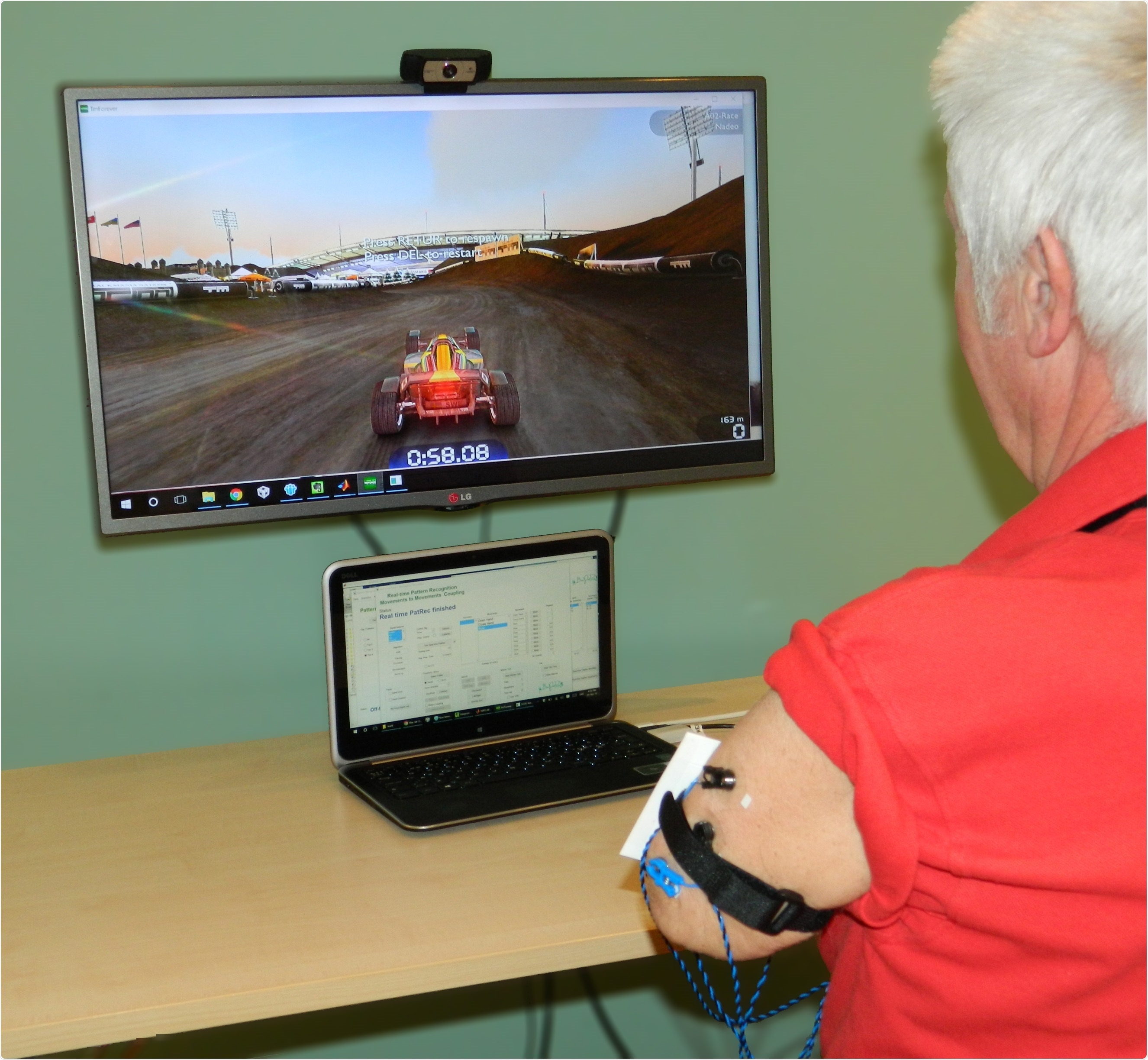In a recent study, patients experienced reduced phantom limb pain after playing an augmented reality car racing game that required them to move the missing limb.

Phantom limb pain is the experience of pain in a limb after it has been amputated. Although it is usual for there to be some pain in the missing limb after amputation, a third of amputees develop very severe pain that worsens their disability and mental state, leading to poor quality of life.
Phantom limb pain can also preclude the use of a prosthesis. It can thus be seriously debilitating, yet no effective treatment for phantom limb pain has been developed.
The underlying mechanisms responsible for phantom limb pain remain unclear. However, it appears that it may arise as a consequence of abnormal neural circuitry in central areas of the brain—central malplasticity.
Phantom motor execution as a treatment of phantom limb pain
The brain does not adapt to the limb loss and neurons in the area of the brain relating to that limb remain active and this can trigger sensations of pain.
Limited success has been achieved with mirror therapy in which reflections of the unaffected limb can be used to create the illusion that the amputated limb is moving.
Patients are encouraged to 'move' the missing limb out of a painful position watching the reflection. However, this does not effectively relieve pain in all cases and cannot be used if both limbs have been lost.
The latest study has taken the mirror therapy concept a step further; patients visualise and 'move' the phantom limb using augmented reality—‘phantom motor execution’. It was conducted in 14 patients who had been experiencing phantom limb pain since the amputation of an arm. Despite trying other treatments, they had suffered from phantom limb pain in the missing arm for between 2 and 36 years.
Sensors that could detect muscular activity were attached to the stump of the missing arm. The signals received by these sensors were then used to produce an image of an active arm on a computer screen.
Patients were trained to use these signals to control the virtual arm, drive a virtual race car around a track and to copy the movements of an arm on screen with their phantom movements. After twelve 2-hour treatment sessions, the patients underwent follow-up interviews 1, 3 and 6 months later.
Based on the patients' ratings, the intensity, quality, and frequency of pain had reduced by 50% after the treatment. There was a 43% reduction in the disruption to everyday activities due to the phantom pain and sleep interruption due to the pain reduced by 61%.
At the start of the study, 12 patients reported feeling constant pain whereas only 6 did 6months after the treatment. However, one patient thought that there was not a considerable difference in the levels of phantom pain before and after treatment.
The results from our study suggest that it may be useful to ‘exercise’ the phantom limb. Our treatment offers an engaging way to do this while also providing a non-invasive and non-pharmacological treatment which was found to reduce chronic pain with no observed side effects. Our findings now need to be confirmed in a large randomised clinical trial.”
Lead author of the study, Assistant Professor Max Ortiz Catalan